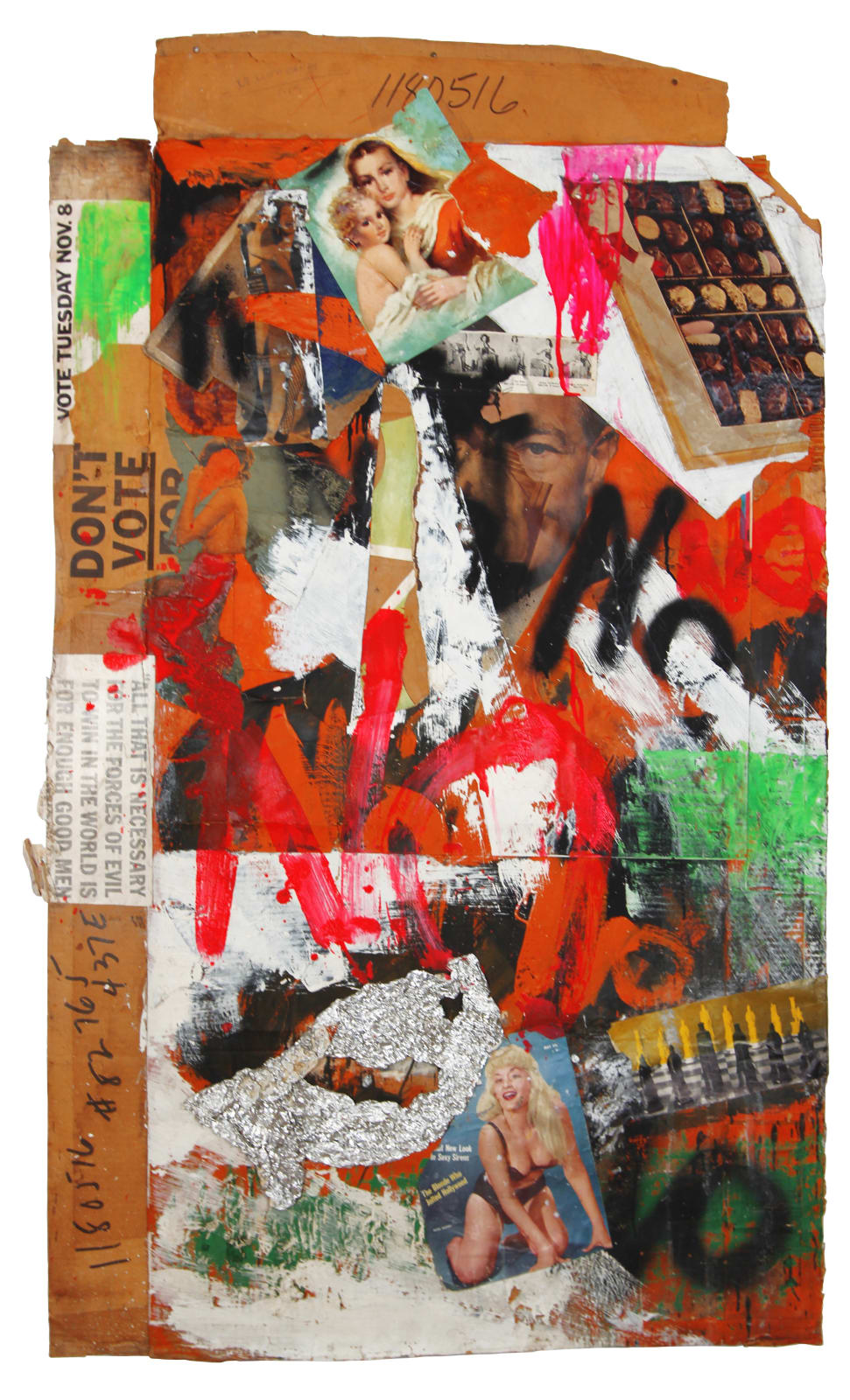Boris Lurie
Boris Lurie’s American exile provided him with some distance from the ruins of Europe in the decade following the end of the war. But in New York he experienced the “hypocritical intelligentsia, capitalist manipulation, consumerism, American and other Molochs,” as he himself described it – and all of this particularly intensely. He consciously took on the role of an outsider and, with his rebellious beatnik attitude, undermined the norms that distinguished between the moral and the amoral in the most radical fashion possible. He filled his artworks with relentless persiflage of the two art practices that dominated the art scene of the time: the sensual, colorful textures of abstract expressionism on the one hand, and the ideography of trivial everyday life to which pop art bowed on the other. Lurie was clearly aware that a straightforward depiction of his own traumatic memories, which is why he simply juxtaposed those memories – on both the symbolic and manifestational level, sublimated into a simple and effective NO in terms of the gaze and thought – with the obscenely dumbed-down images of consumerism as it was portrayed by television sit-coms. Along with the pin-up erotica of so-called “girlie magazines”, his work whirled into an obscenely simplified idolatry of the American way of life, including politics and social decision-making. Therefore democracy--equated with the consumer frenzy of endless choice where appearance is all that matters and substance falls well by the wayside.
In typical Lurie style, the painting NO with Candy underlines all of the above, while at the same time contrasting, with distinctly political connotations, the horizons of both protagonists of the two Americas of the time, compatriots from Massachusetts who hailed from the same environment. On the one hand, there is an apparent hope for change, at least seemingly represented by Kennedy's victory in the 1961 election, and on the other, the defeated Nixon's vice-presidential candidate Henry Cabot Lodge Jr., Lurie's ‘Altered Man’, the embodiment of the establishment’s omnipresent evil and kitschy domesticity, constantly lurking in the background like Big Brother. But Lurie was under no illusions, and he surely understood Kennedy's famous quote – taken from the Enlightenment thinker Edmund Burke, which he included in his image and reads: “The only thing necessary for the triumph of evil is for good men to do nothing.” – as a daily political populist platitude, even though he himself followed this precise maxim faithfully at every turn. The heterogeneous character of collaged visual statements, which we see in the juxtaposed images of the Mother of God with the helpless child in her arms on the one hand and the naked, exploited female bodies on the other, seeks to demonstrate the immoral nature of the world through traditionally immoral means, thus avoiding any assimilation with an ethical value system that would in turn provide every chance of reconciliation with this same world. Thus, he remains radically critical at all times, and is marked by an immanent transgressiveness, which is why he has never, even to this day, lost any of his edge.
Marko Kosan
